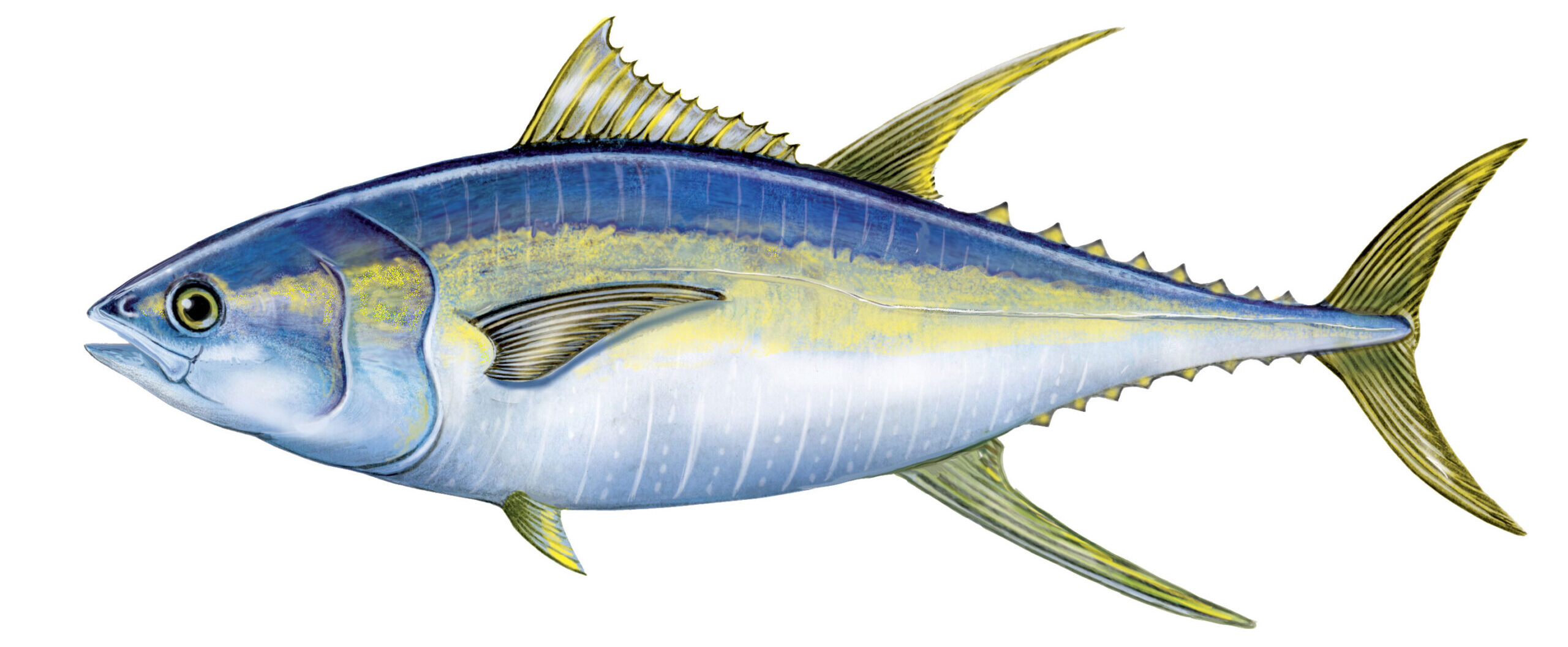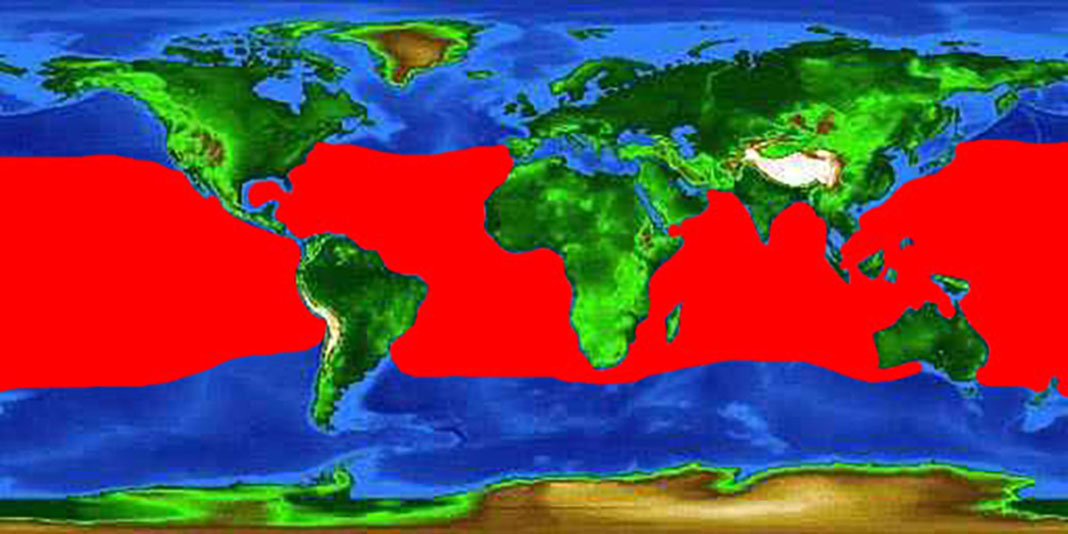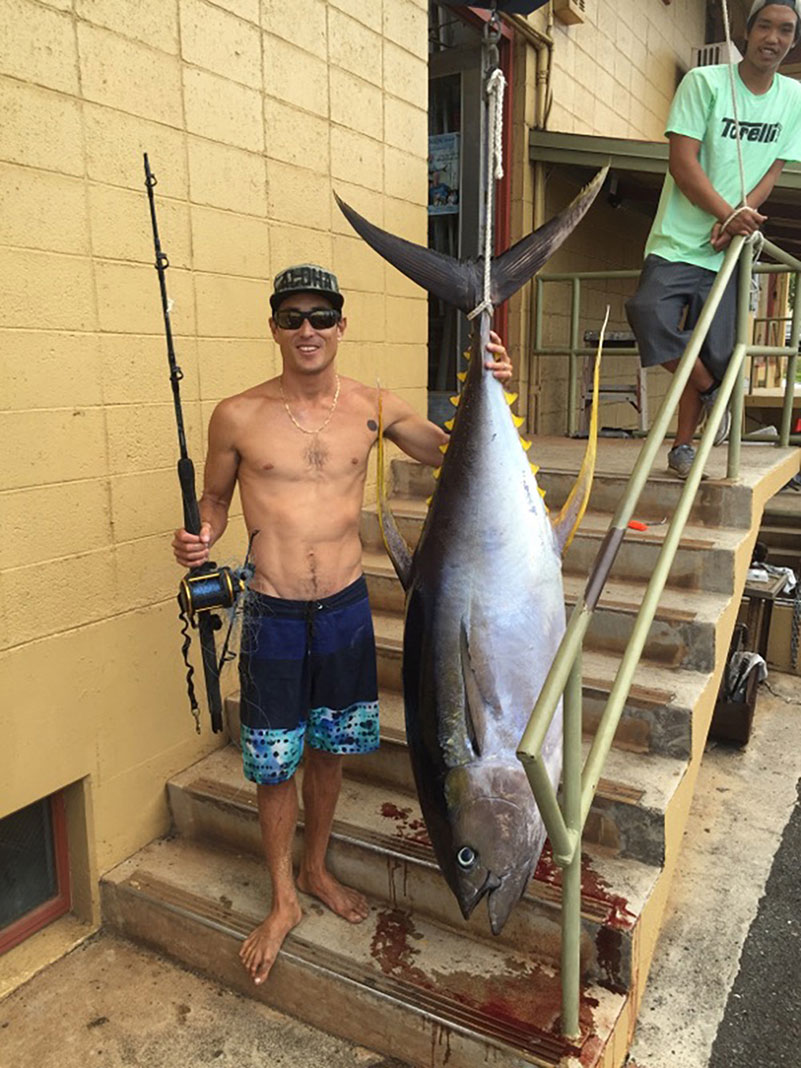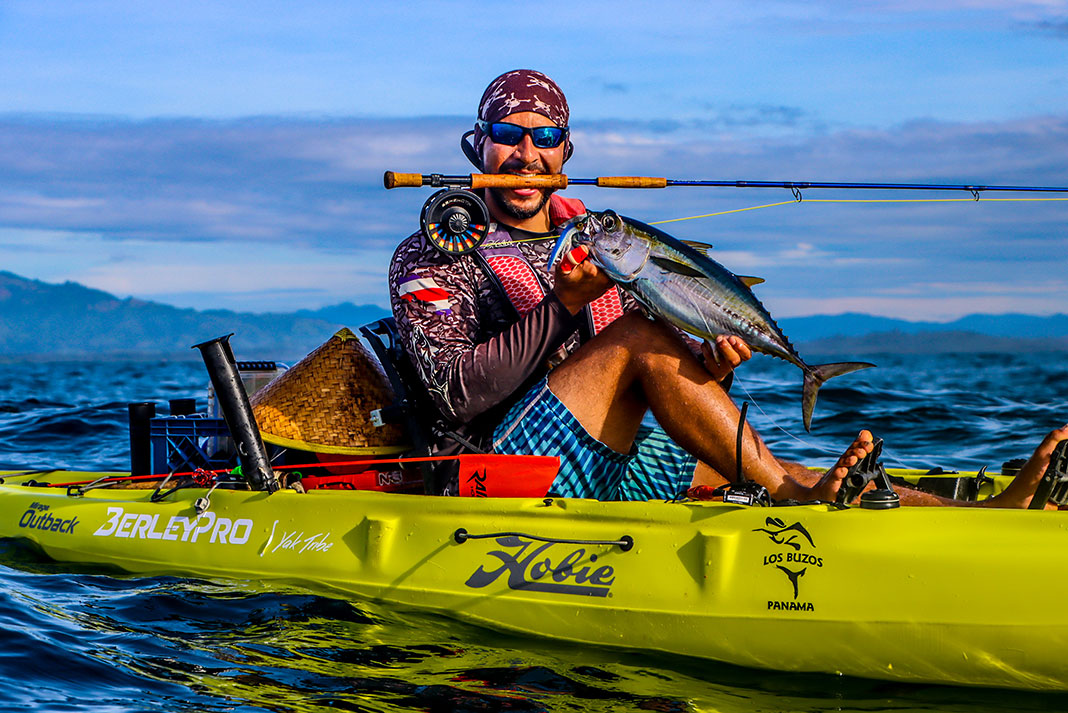Products You May Like
M
ore colorful than most species of tuna, the yellowfin lives up to its name. Their backs are dark black fading into bright yellow racing stripes and sparkling silver bellies. The bright yellow finlets above and below the tail give yellowfin tuna their name. Yellowfin inhabit all the world’s tropical and subtropical oceans and seas. They are epipelagic, spending most of their time above the thermocline, which is the transition layer between warmer water at the ocean’s surface and cooler water below. Kayak anglers mostly spend time fishing for smaller yellowfin tuna, known as footballs. The largest yellowfin, called cows, weigh 200 to 300 pounds and are found in the eastern Pacific off Southern California and Baja.
Expert Tips on Fishing for Yellowfin Tuna
Yellowfin tuna
(Thunnus albacares)
Also known as: Ahi
Distribution: Tropical and subtropical oceans around the world
Average size: 25–75 lbs
Can grow to: 7’, 400 lbs
IGFA All-Tackle Record: 427 lbs, Guy Yokum, Cabo San Lucas, Mexico 2012
Diet: Fish, squid, crustaceans
Fun fact: Yellowfin tuna can grow to 400 pounds in just seven years.
Yellowfin on the Hunt
Yellowfin hunt by chasing down their prey. They feed mostly on other fish, crustaceans and squid. Yellowfin are famous for jumping high out of the water to snatch flying fish from the air. Like all tuna, they are obligate respirators, which means they must swim to pass oxygen-laden water over their gills. When hooked, the tuna’s perfect hydrodynamic shape, incredibly fast sickle tail and muscular body turn into a speeding missile that will test the toughest tackle.
Yellowfin on the Line
Kayak anglers have three options for catching yellowfin: poppers, metal jigs and live bait. When tuna are near the surface, nothing beats a cup-faced popper on a heavy spinning rod. To incite a bite when yellowfin appear on the fish finder, drop a speed jig and work it to the surface quickly.
When the fish are scattered, slow trolling a live scad, mackerel or blue runner bridled to a circle hook is the best way to find them. It takes the best-quality, heavy-duty spinning or conventional equipment to land a tuna from a kayak. Spool the reel with 20- to 80-pound braided line. Once hooked into a tuna, expect a long, tough battle to test rod, reel and tackle.

Yellowfin on the Table
C’mon now, we’re talking about yellowfin tuna! While tuna are coveted by the best chefs and gastronomes, their meat isn’t the easiest to prepare. First, as soon as a tuna hits the deck, cut the artery below the gills and behind the pectoral fins to quickly drain the blood. Then, store the fish packed on ice. Fresh tuna meat should be dark red and slightly translucent.
Yellowfin tuna is one of the most popular types of sashimi, served raw on a dollop of sticky rice. Cook tuna like a beef steak, careful to sear the outside while leaving the inside undercooked or even raw. Overcooking tuna makes it dry and tough.
Top Spots
Yellowfin tuna are one of the most common sportfish in subtropical and tropical waters around the world, but there are only a few places where the fish can be caught within kayak range. Panama, Hawaii, Japan and Australia are popular yellowfin hotspots. Otherwise, kayakers hoping to target yellowfin require a mothership to carry them to the fishing grounds.

Tuna Tale

The 187.6-pound yellowfin tuna Nick Wakida caught in 2016 from his Hobie Revolution off Maui, Hawaii, is one of the largest fish ever landed from a kayak. Here are some of Wakida’s inside tips for yellowfin.
Be ready for the long haul, because “large tunas will fight you all the way to the boat,” he says. He recommends using a heavy-action rod and reel spooled with 50-pound braid and a 20-foot leader of 60-pound fluorocarbon.
If you find tuna working at the surface, a popper can be effective and exciting. Still, Wakida prefers to throw a 120-gram fast-pitch jig with 3/0 assist hooks. “A jig gives me the option to work the lure on top or down deep.”
While jigging is simpler and easier, the best way to catch a yellowfin is with live bait. “Big tuna can’t resist a live bait,” Wakida says. To expose the circle hook to the tuna’s jaw, he suggests bridaling the bait with Nitta Live Zips on a six-foot length of 60- to 80-pound fluorocarbon leader.
This article was first published in the Early Summer 2022 issue of Kayak Angler Magazine. Subscribe to Kayak Angler Magazine’s print and digital editions, or browse the archives.
Yellowfin tuna are a top predator and favorite target for offshore fishing. | Feature photo: Adam Fisk, Los Buzos Resort, Panama
